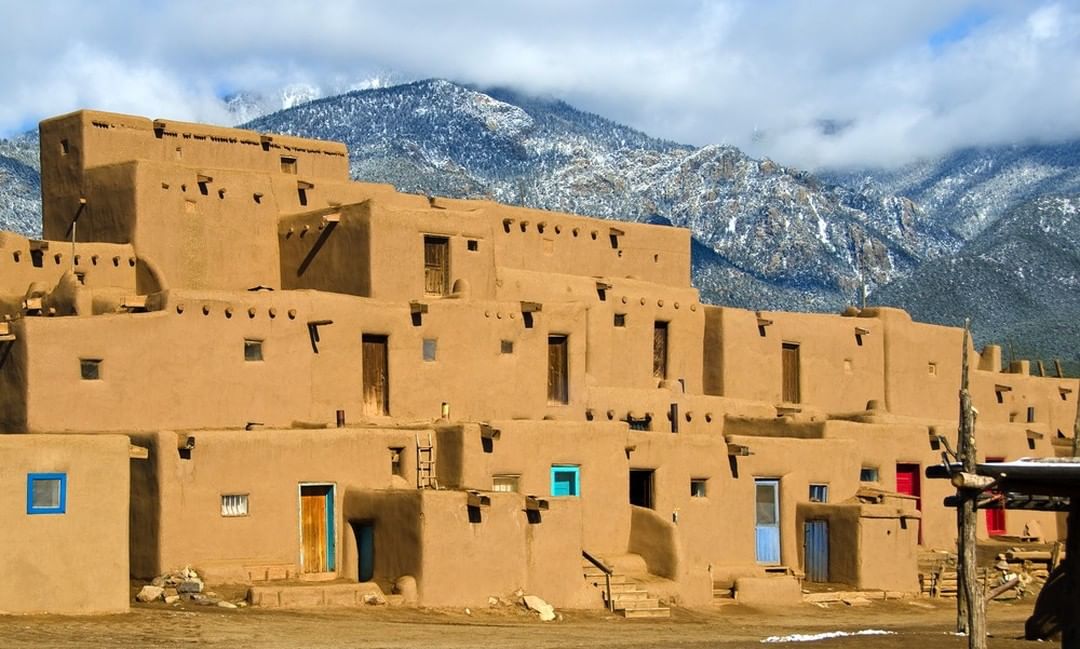

Adobe Bar at the Historic Taos InnĬalled “the living room of Taos,” the Adobe Bar features a long tequila list and nightly entertainment from inside the Historic Taos Inn located in the center of town.

Focus your attention on the margarita list here-shout out to “The Horny Gramma,” which is deceptively strong. But it has all the fixings of your favorite local dive bar: a pool table, shuffleboard, TVs, and live music every night, with the added charm of a skylight lined with plants and string lights. I t was built in the 16th century by the Pueblo Indians and was later occupied by the Spanish government from the 17th to the 19th centuries. An absolute must visit.Ī dive bar meets the historic southwest, Alley Cantina is housed inside the oldest building in Taos. Set inside a former chapel from the 1800s-stripped back to a now minimalist design-this beautiful space regularly fills up and will fill you up: with three mushroom walnut pate, caramelized onion and apple quesadilla, homemade gnocchi with peas, asparagus, and greens, and the Love Apple tacos. Reservations highly recommended at Love Apple, where the menu changes nightly but always features organic local ingredients. The white-washed, book-covered space also sells products from local makers, like oils, stationary, and spices. This all-organic community cafe uses regional ingredients to make breakfast items like blueberry blue corn pancakes, chorizo mingas, and smoothies, as well as a variety of sandwiches, salads, and soups, from chicken tinola and beef banh mi to hot ham and brie and bone broth. Bring cash, since they don’t take cards, and consider purchasing a birthday cake-sized cinnamon bun on your way out. Come early: It’s first-come, first-served, and this spot is a favorite among locals. Come hungry: My giant plate of huevos rancheros also came with two (!) choices of sides, including pancakes, toast, or hash browns, among other options. Michael’s Kitchen and Bakery is your quintessential southwestern diner, with a massive menu featuring copious amounts of chili. The Best Restaurants in Taos Michael’s Kitchen and Bakery hook.), and charming southwestern hospitality and decor. Today, the Hacienda del Sol hotel still offers stunning views of the Taos Mountain, seriously delicious complimentary breakfast (the scrambles are off. Renowned American novelist Frank Waters lived here in 1939, authoring People of the Valley and researching for The Man Who Killed the Deer, which he dedicated to the Luhans.

After Mabel and her fourth husband, a Taos Puebla man named Antonio Luhan, moved across town, this adobe home was used as a guesthouse and artist studio-Georgia O’Keeffe stayed here, as did D.H. This hotel was the former residence of Mabel Dodge Luhan, a patron of the arts who convinced a cohort of artists from New York to come out west. Waking up in one of these structures, made of earth-packed tires, bottles, aluminum cans, or plastic bottles, feels like you’re on the set of Star Wars, or have landed on Mars-especially in the morning when the sun coming up over the mountains bathes everything in an orangey-red. Just outside of Taos is the Greater World Earthship Community, the world’s largest off-grid, legal subdivision. Here is the chance you didn’t know you were waiting for to stay inside an earthship, a passive solar shelter made of natural and upcycled materials. Where to Stay in Taos The Greater World Earthship Community But to skip Taos proper altogether would be a mistake-because it’s there that you can learn about the distinctly New Mexican way of life that might just convince you to stay, too. Many visitors come for the skiing, and stay in resorts just outside of town. Taos is still an amalgam of culture and creativity, and you can’t help but be inspired by the land and the people. Today, Julia Roberts and Brittany Howard, former Alabama Shakes frontwoman, call Taos home, as well as countless artists, musicians, and innovators. In many instances, artists arrived for a summer or to study and never left (see: Georgia O’Keefe, Agnes Martin). It’s a cauldron of culture and creativity.”ĭespite the inherent challenges of Taos, artists have been flocking here since the late 1800s and early 1900s when the Taos Society of Artists was formed. It’s been the creativity that’s kept Taos going. You have to learn to be autonomous and creative. As Bob Fies, a docent at the Harwood Museum of Art, told me during my visit: “Taos people have learned to stick it out, to respect one another, and to be independent. Tucked against the Sangre de Cristo Mountains in northern New Mexico’s high desert, its winters are brutal, terrain unforgiving, and-with a population of roughly 5000 at last count-the community is small.

It’s hard to fathom how Taos became a destination.


 0 kommentar(er)
0 kommentar(er)
